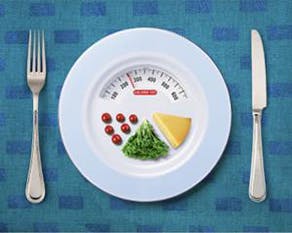4 Common Myths About a Healthy Heart—Debunked
HEALTH & WELLNESS
10.21.2014

When you think about it, our heart is pretty darn amazing. This one little fist-shaped muscle on the left side of our chest keeps us alive. And yet, so many of us put more effort and energy into buffing, oiling, and keeping our cars in top-notch condition than we do our heart’s health.
One reason is that there’s a lot of misinformation circulating about how to keep the heart healthy—why we’re addressing these myths here.
This way, you’ll have the information you need to keep your heart ticking for a long, long time to come.

MYTH
Heart disease doesn’t run in my family — why I don’t really worry about it.
REALITY
You’re right: heart disease does typically run in families. In fact, your risk of heart disease increases if your father or a brother was diagnosed with cardiovascular disease before 55 years of age, or if your mother or a sister was diagnosed with cardiovascular disease before 65 years of age.1
But heart disease doesn’t only occur in those with a family history of it. Heart disease can occur even in those with no genetic link to heart disease. What causes it? Heart disease is the result of plaque buildup, also called atherosclerosis, in your arteries that changes the arteries from being smooth and elastic to narrow and rigid—preventing blood from flowing normally to the heart.
In fact, this plaque starts to deposit in your arteries from the time you’re young based on your diet (typically a diet rich in red meat and other foods high in saturated fat and cholesterol)—and can slowly accumulate in the walls of your arteries as you get older, inflaming them and increasing your risk of heart attack and stroke.
The bottom line is that heart disease is a progressive disease, which means it can get worse as you get older—family history or not.

MYTH
I eat a pretty healthy diet and exercise, so I’m not at risk for any heart problems.
REALITY
Eating healthy and exercising are two of the key ways to prevent heart disease, but there are other risk factors for heart disease that you should know about:
High blood pressure: Blood pressure is the force of blood pushing against the walls of the arteries as the heart pumps blood. If this pressure rises and stays high over time, it can damage the arteries.
High cholesterol levels—including LDL or “bad” cholesterol levels: Cholesterol, particularly LDL cholesterol, is what contributes to plaque buildup in arteries. HDL or “good” cholesterol, on the other hand, helps remove cholesterol from your arteries. The higher your HDL, the lower your risk of heart disease.
Stress and/or depression: Stress can cause your arteries to narrow, raising your blood pressure. Also, people who are depressed are up to three times more likely to develop heart disease than people who aren’t depressed. Two reasons: The mental stress that accompanies depression may increase plaque formation in the arteries. Depression may also increase the production of compounds called free radicals that can damage the lining of the blood vessels.
Anemia (having a lower than normal number of red blood cells—which carry oxygen to cells): You can develop anemia if your red blood cells don’t contain enough hemoglobin (an iron-rich protein that carries oxygen from your lungs to the rest of your organs). This means your organs aren’t getting enough oxygen-rich blood, which means your heart has to work harder to compensate for the lack of oxygen—putting you at higher risk of heart disease.2
Inadequate nutrition is the most common cause of anemia. Production of hemoglobin depends upon the mineral iron, most prominent in meat, poultry, and egg yolks. It’s also found in green leafy vegetables, dried beans, and whole grains.
Also important: Foods rich in vitamin C, which help the body absorb iron, and B vitamins. Taking a daily multivitamin with iron and these nutrients, like Centrum® Silver® Women Multivitamin, can also help you give the nutrients you need to prevent anemia.
Diabetes and pre-diabetes. These two conditions raise your risk of cardiovascular disease more in women than in men. In fact, having diabetes doubles a woman's risk of developing cardiovascular disease. The reason: high blood glucose levels, over time, can damage nerves and blood vessels.3
So while eating healthy and exercising are key to a healthy heart—there are plenty of other factors that can put your heart at risk.

MYTH
I smoke, but I eat healthier and exercise more than most people. My heart is doing fine.
REALITY
Smoking is one of the worst things you can do for your heart. It exposes you to carbon monoxide, a chemical that robs your blood of oxygen and triggers a buildup of plaque in your arteries (even if you are eating a healthy diet).
Smoking also increases the risk of blood clots forming in your arteries. Blood clots can block plaque-narrowed arteries and cause a heart attack. Add to this that smoking can lower your levels of HDL cholesterol—and quitting smoking can raise HDL levels by up to 10 percent.4
Bottom line: The longer you smoke, the greater your risk for a heart attack. Stopping smoking—while maintaining your healthy diet and exercising—will keep your amazing heart even healthier.

MYTH
I’ve got a strong heart! I exercise regularly.
REALITY
Exercising is one key to a healthy heart. In fact, people who don’t exercise are nearly twice as likely to develop heart disease as those who are physically active.5 But diet is another key part of the equation. In fact, foods that contain too much saturated fat, trans fats, and dietary cholesterol can contribute to high levels of blood cholesterol (which can get deposited in the arteries over time, narrowing them and restricting blood flow to the heart).
Saturated fat is found in foods like whole milk, high-fat cheese, butter, whole-milk ice cream, palm and coconut oils, high-fat cuts of meat like rib eye and T-bone steaks, and sausages and hot dogs (and other processed meats). It’s generally recommended that you keep saturated fat to less than 7% to 10% of your total daily calories.
Trans fats are types of fat found in foods that contain partially hydrogenated oil. They’re found in fried foods and fast foods, as well as in processed foods like cakes, cookies, frozen pizza, and microwave popcorn. Opting for 0 grams of trans fats when choosing foods is best.
Dietary cholesterol is found in animal products, such as eggs, meat, and cheese. Cholesterol is a waxy substance that can combine with fat, calcium, and other substances in the blood to form plaque in the arteries.
When it comes to a healthy heart, knowing how to mitigate your risk factors, detailed above, is key—as your risk of heart disease rises with the number of risk factors you have. Having just one risk factor doubles your risk for cardiovascular disease. Having two risk factors increases your risk for cardiovascular disease fourfold. Having three or more risk factors increases your risk for cardiovascular disease more than tenfold.
Hope this information helps you stay healthy. Be well!
1 “Who is at Risk for Heart Disease?” National Heart, Lung, and Blood Institute;
http://www.nhlbi.nih.gov/health/health-topics/topics/hdw/atrisk.html
2 “Anemia as a risk factor for cardiovascular disease in the atherosclerosis risk in communities (aric) study,” Mark J Sarnak, MD*; Hocine Tighiouart, MS, et al., Journal of the American College of Cardiology, Vol. 40, 1, July 2002;
http://content.onlinejacc.org/article.aspx?articleid=1130180
3 “Diabetes, Heart Disease, and Stroke,” National Diabetes Information Clearinghouse;
http://diabetes.niddk.nih.gov/dm/pubs/stroke/#connection
4 “HDL Cholesterol: How to Boost Your ‘Good’ Cholesterol”, MayoClinic.com;
5 “Your Guide to Physical Activity and Your Heart,” U.S. Dept of Health and Human Services; National Institutes of Health; National Heart, Lung, and Blood Institute;
http://www.nhlbi.nih.gov/health/public/heart/obesity/phy_active.pdf
Recommended Articles
The 5 Best Foods That Will Help Supercharge Your Brain
Amidst our busy schedule, it's important to retain our focus and memory. Resting alone is not...
Iron deficiency is a lot more common than you would think. A recent survey by SATA CommHealth(i...
Mars vs Venus: Understanding the His and Hers of Nutritional Needs
Mars vs Venus: Understanding the His and Hers of Nutritional Gaps Although their DNAs are...






